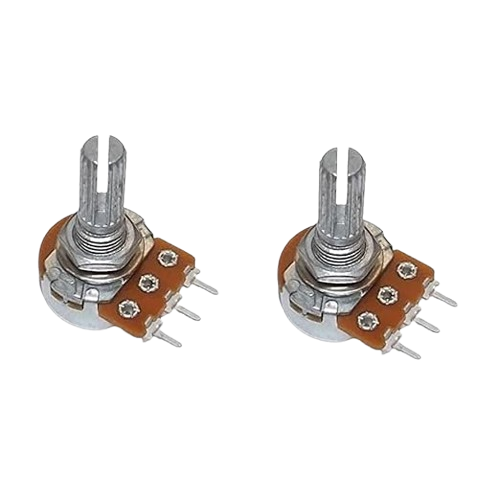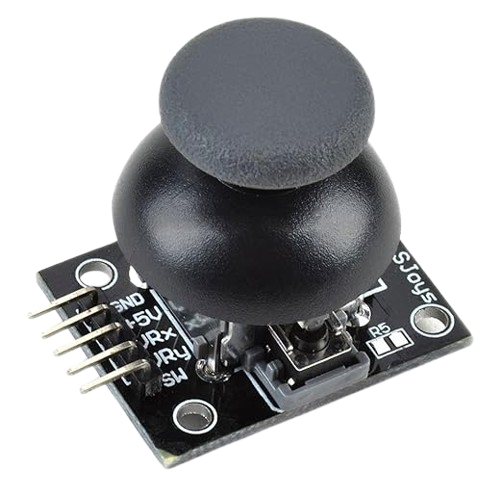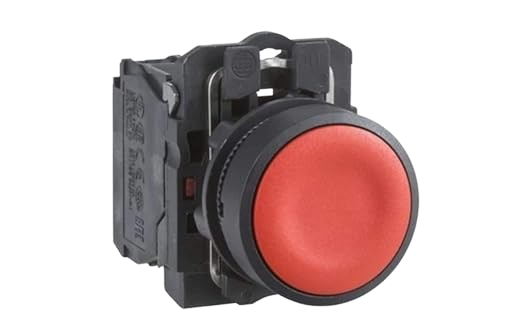Potentiometer: Types, Working Principle, Applications, Advantages & Selection Guide
A potentiometer is a three-terminal variable resistor used to control voltage and current in electronic circuits. This detailed guide explains potentiometer types, working principle, applications, and benefits, along with tips for choosing the right one. Perfect for students, hobbyists, and professionals seeking clear, accurate, and practical information.

Device Overview
Introduction
A potentiometer is a very common but important electronic component that you will find in many everyday devices. It is basically a three-terminal variable resistor that can control the amount of voltage in a circuit. You have probably used one without even realizing it — for example, when turning the volume knob on your speaker, adjusting the brightness of a lamp, or tuning an old radio.In simple terms, a potentiometer allows you to adjust or control electrical signals. Because it is accurate, reliable, and easy to use, it is used in a wide range of devices — from basic electronics to industrial machines. In this guide, we will learn everything about potentiometers, including their working principle, types, advantages, and a real-life example.
What is a Potentiometer?
A potentiometer (often called a pot) is a resistor whose resistance can be adjusted manually. Unlike fixed resistors, where the resistance value is constant, potentiometers allow you to change resistance by moving a control knob or slider.
This change in resistance also changes the voltage output. That is why potentiometers are often used as voltage dividers in circuits. They work based on Ohm’s Law, which says that voltage, current, and resistance are related.
How a Potentiometer Works
The working of a potentiometer is simple but effective:- A resistive strip or track is connected to two terminals.
-
A movable contact, called a wiper, slides along this strip.
- As you turn the knob or move the slider, the wiper changes its position, which changes the resistance between the wiper and each end of the track.
- This change in resistance alters the voltage output at the wiper terminal.
Example:
If you connect a 10kΩ potentiometer to a 5V power supply, you can adjust the wiper to get any voltage between 0V and 5V at the output.
Formula:
Vout=Vin×RwiperRtotalV_{out} = V_{in} \times \frac{R_{wiper}}{R_{total}}Construction of a Potentiometer
A standard potentiometer has the following main parts:-
Resistive Element – Made from carbon, cermet, or conductive plastic.
-
Wiper – The moving part that slides on the resistive element.
-
Terminals – Two connected to the ends of the resistive track, one connected to the wiper.
-
Shaft/Knob or Slider – Used to move the wiper.
-
Housing – Protects the component from dust and damage.
Types of Potentiometers
There are different types of potentiometers, each designed for specific purposes:1. Rotary Potentiometer
- Operated by turning a circular knob.
- Common in volume controls, tone adjustments, and tuning devices.
2. Linear Potentiometer
- Operated by sliding a lever in a straight line.
- Used in audio mixing consoles and sliders.
3. Digital Potentiometer
- Controlled electronically, not manually.
- Ideal for automated systems and microcontroller-based applications.
4. Trimmer Potentiometer (Trimpot)
- Small adjustable potentiometers used on PCBs for fine-tuning circuits.
5. Multi-turn Potentiometer
- Requires multiple turns to go from minimum to maximum resistance.
- Used for high-precision adjustments.
Advantages of a Potentiometer
-
Easy to use – Simple turning or sliding motion changes resistance.
-
Low cost – Affordable and widely available.
-
Versatile – Works in audio, lighting, sensors, and measuring instruments.
-
Adjustable – Can set exact voltage or signal level.
Disadvantages
-
Mechanical wear – Moving parts can wear out over time.
-
Limited accuracy – Not as precise as some digital controls.
-
Sensitive to dust – Can affect smooth operation if exposed.
Applications of Potentiometers
Potentiometers are used in many areas:-
Volume Controls – Radios, amplifiers, and speakers.
-
Light Dimmers – Adjusting brightness in lamps.
-
Position Sensing – In joysticks, steering wheels, and robotics.
-
Calibration – Fine-tuning instruments and measuring devices.
-
Industrial Control – Speed control for motors.
Selection Guide – How to Choose the Right Potentiometer
Before buying a potentiometer, you should consider:-
Resistance value – Common values are 1kΩ, 10kΩ, 100kΩ.
-
Type – Rotary, linear, trimmer, or digital.
-
Power rating – Ensures safe operation.
-
Tolerance – Accuracy of resistance.
-
Material – Carbon is cheaper, cermet and conductive plastic last longer.
Example – Potentiometer in Volume Control
One of the most familiar uses of a potentiometer is in controlling audio volume:-
Setup – A rotary potentiometer is connected to an audio amplifier.
-
Operation – Turning the knob changes resistance, which changes the voltage reaching the amplifier.
-
Effect – Higher voltage means louder sound; lower voltage means softer sound.
Additional Notes
-
Potentiometers can be logarithmic or linear in their response. Linear types change resistance evenly across movement, while logarithmic types change more gradually, matching how humans hear sound.
-
They are sometimes compared with rheostats, but the main difference is that a rheostat has two terminals and is mainly used to control current, whereas a potentiometer has three terminals and is often used as a voltage divider.
Conclusion
The potentiometer is one of the simplest yet most important components in electronics. From adjusting volume to fine-tuning measurement devices, it plays a vital role in countless applications. By understanding its types, working principle, and selection criteria, you can choose the right potentiometer for your project or device. Whether you are a hobbyist, student, or professional, mastering this component will give you greater control and flexibility in your electronic designs.Where to Buy
| Platform | Price | Action |
|---|---|---|
|
|
₹65 | Buy Now |
Prices may vary. Click on "Buy Now" to check current availability and pricing.
Administrator
Frequently Asked Questions
Common questions about Potentiometer: Types, Working Principle, Applications, Advantages & Selection Guide. Find answers to the most frequently asked questions.
User Reviews & Comments
Share your experience with this IoT device. Your feedback helps our community make informed decisions!
Share Your Experience
Help others by sharing your thoughts about this IoT device.
Related Devices
Explore more IoT devices in the same category

Learn everything about Joystick Module for IoT projects including its types, working principle, pinout diagram, Arduino interfacing, and real-life applications. This guide is perfect for electronics hobbyists and students building smart control systems using joystick sensors.
Learn everything about Push Buttons in IoT devices, including their working, wiring techniques, and real-time applications. This detailed guide helps electronics beginners and developers understand how push buttons are used in smart systems. Perfect for IoT-based projects and educational use. Discover how this small component plays a big role in modern automation.

No Reviews Yet
Be the first to share your experience with this IoT device!